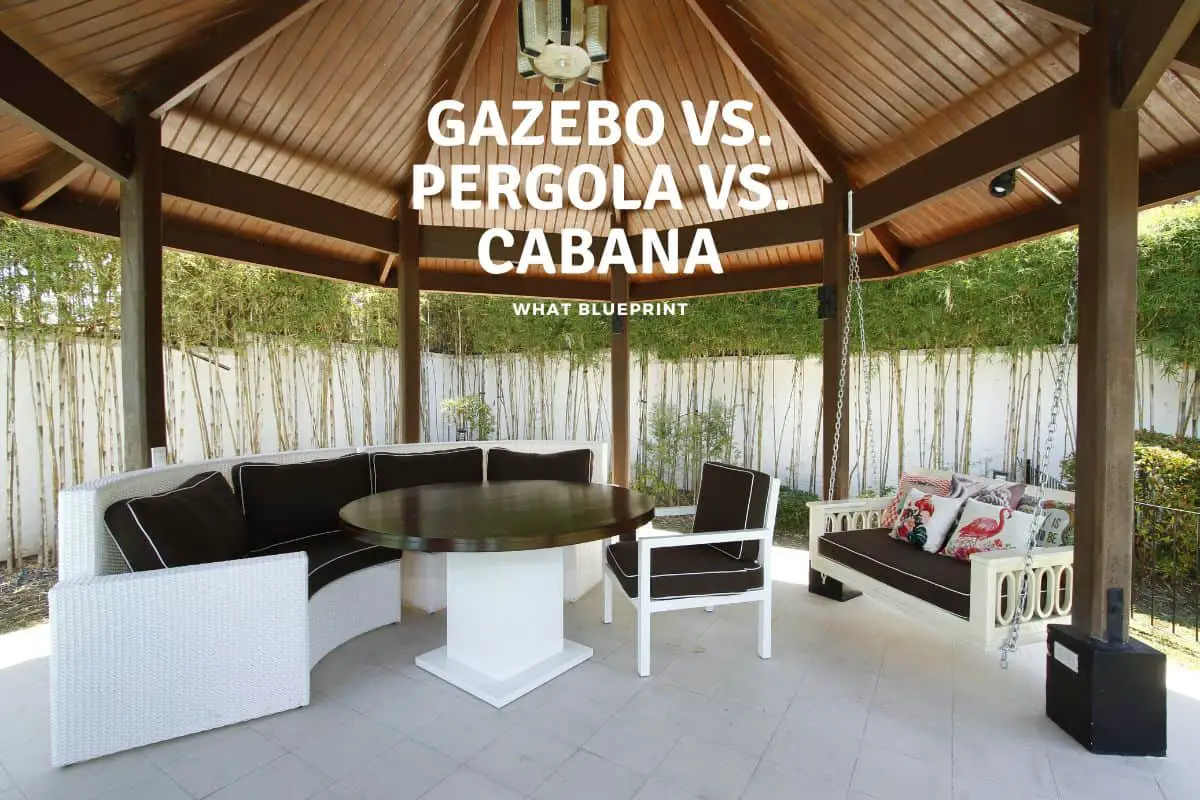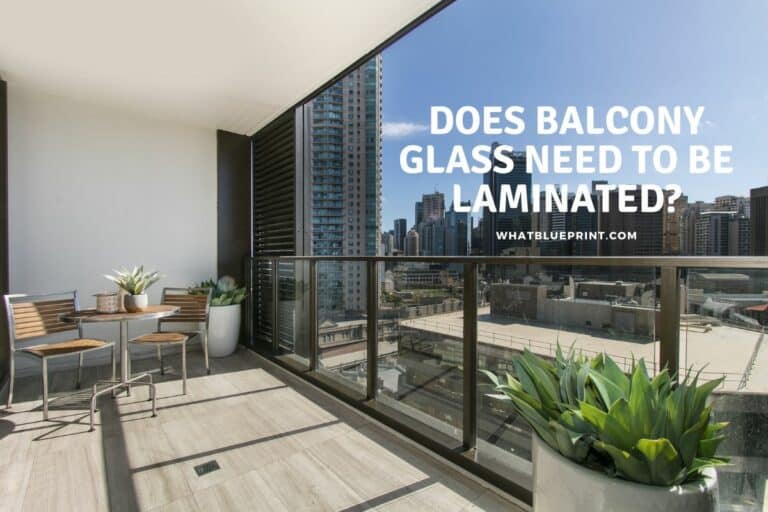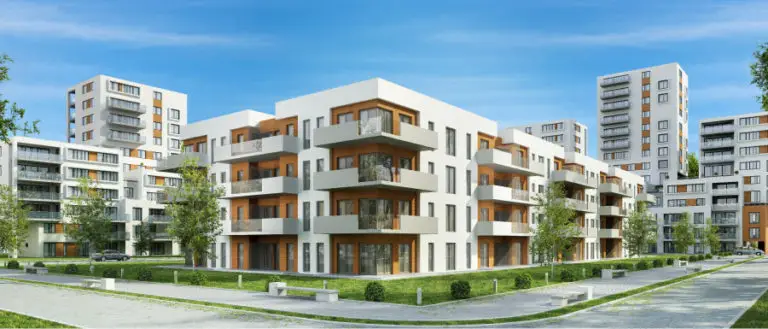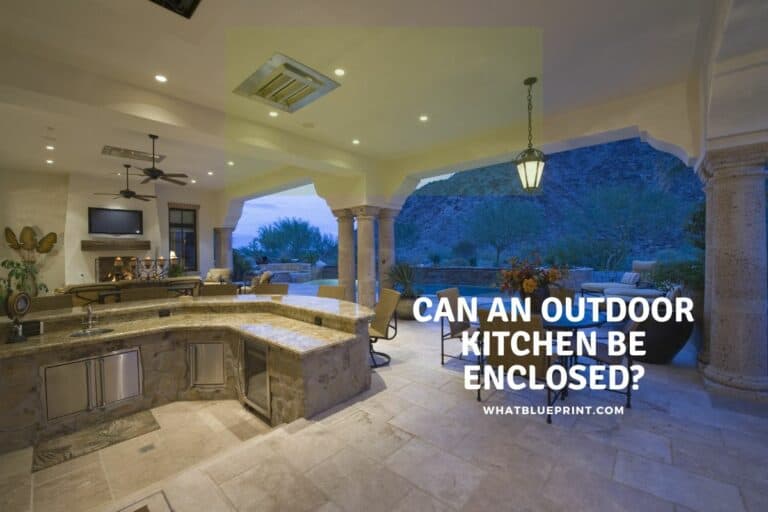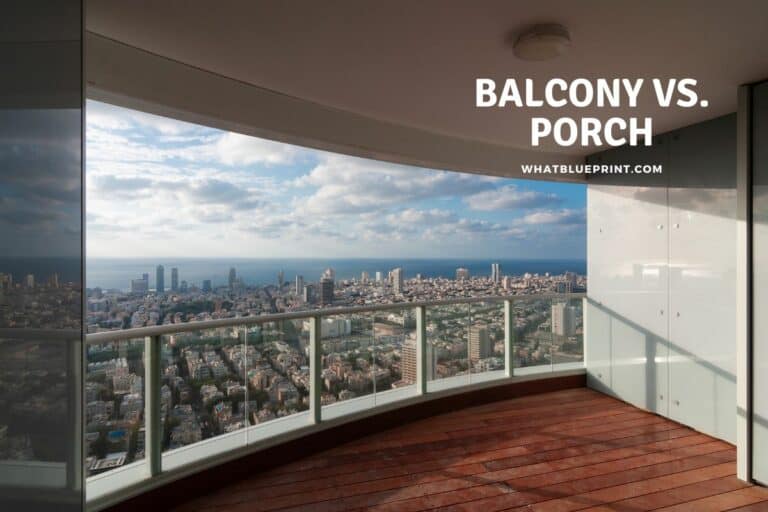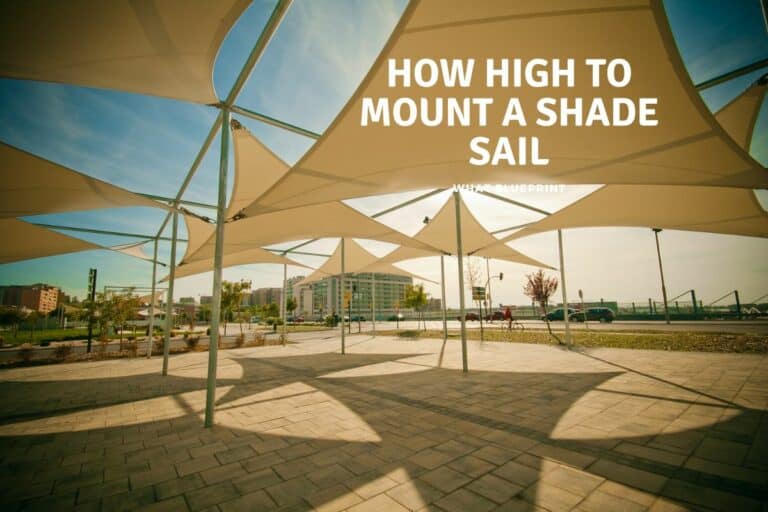Gazebo Vs. Pergola Vs. Cabana
They sound as though they belong on a Caribbean island, but gazebos, pergolas, and cabanas have one thing in common – they enhance gardens the world over, providing shelter, adding a structural element, and just looking elegant and beautiful.
Gazebo, pergola, or cabana – which is the most suitable and the most attractive for your particular setting and style of garden? They share several features, but each structure also has specific properties and is traditionally used in a unique way.
Are you looking for a private retreat in the corner of your garden, do you want protection from the sun at your poolside, or do you want an architectural feature over your patio which will provide support to a leafy creeper or vine? Some great options are available, so look at how best you can bring the Caribbean into your home.
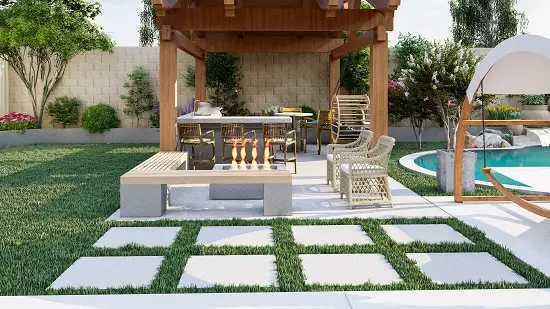
Gazebo Vs. Pergola Vs Cabana – A Comparison
Gazebos and Cabanas are closely related, and the origin of both can be traced back 5000 years to ancient Egypt. The first recorded pergola dates back to 1400 B.C., also to Egypt. It is a type of gazebo, but because it is a more open structure is more common in dry climates.
Definition Of A Gazebo
A gazebo is a freestanding structure, usually but not always hexagonal or octagonal in shape, sometimes open-sided but more often with a fence-style low wall around all but one or two sides. It is often raised slightly above ground level, has a roof, and may include built-in bench seating around the perimeter.
A gazebo is often found in public parks and, whether there or in private gardens, is positioned to provide a view to those relaxing under the roof. If you want to make it a little more visually striking you can consider adding veranda pillars rather than plain wood.
Definition Of A Pergola
A gazebo is a separate structure from the house, and a pergola may also be but is very often attached to the house. It forms an extension of the living area or is used to cover a patio or walkway.
The traditional pergola is characterized by wooden or more ornate concrete uprights supporting a framework of beams. It has either no roof or a flat, latticed roof which provides limited protection from the sun with dappled shade.
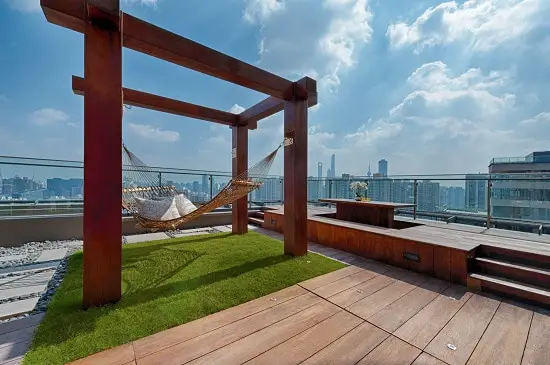
A Pergola With A Roof Is Aso Known As A Pavilion
A freestanding pergola can be enhanced by fitting a flat roof to provide shade instead of growing creepers over it, as with a traditional pergola.
The difference between a roofed pergola (called a pavilion) and a gazebo or cabana is that the pavilion remains open on all four sides. In contrast, a gazebo has low walls, and a cabana is fully walled on three of its four sides.
Modern pergola designs have incorporated different forms of roofs while still avoiding walls of any kind. Gabled and arched roofs provide more cover than lattice roofs, while promenade roofs are used on pergolas covering walkways.

Definition Of A Cabana
Closely related to a gazebo, a cabana is, by definition, a waterside structure. Traditionally square or rectangular with a thatched roof, a cabana usually is walled on three sides. The fourth side opens out to the pool, lake, or sea. The name derives from the Latin word “capanna” meaning “hut,” but modern cabanas are much more luxurious than the name implies.
To summarize, gazebos and cabanas are both freestanding structures, both roofed and open on one side.
- The cabana is a waterside shelter designed for relaxing between swims,
- while the gazebo is more of a retreat.
- The pergola, while it can be detached, is more likely to be an extension of a home’s living area, has supporting pillars but no walls, and in its traditional form, a latticed roof.
The Advantages And Disadvantages Of A Gazebo
A gazebo is possibly not an option in small gardens. Still, it is a beautiful garden structure, and if you have the space can be a perfect place to relax, enjoy a glass of wine, and read in a quiet corner of the garden.
Advantages Of A Gazebo
- Being walled almost all the way around, even though it’s more a fence than a full-height wall, you will enjoy a certain amount of privacy.
- The pitched roof will provide protection from the sun and rain, making the gazebo usable more days of the year.
- Depending on its size, the gazebo can be moved as it is a self-contained unitary structure. This allows you to find the ideal spot each season, such as a shady corner in summer and a sunny one in the colder months.
- Because of their aesthetics and the fact that they can be used in windy, rainy, or hot weather, gazebos are marvelous places to wine and dine with friends in a romantic garden setting.
Disadvantages Of A Gazebo
- Where a cabana is a perfect poolside accessory, and a pergola can fit perfectly over a patio, a gazebo requires its own space in the garden. Because it’s an impressive, attractive structure, it needs to be framed in the right setting. So a small garden is not a suitable space.
- Gazebos, particularly the hexagonal and octagonal ones, are traditionally wooden structures, and the carpentry involved in erecting them requires the skill of a professional or a very competent home handyman.
- They’re also more expensive than pergolas and cabanas. Because of the multitude of angled joints and miters, building it is a time-consuming job. Pre-treated timber must be used to prevent problems with rot, although composite wood and PVC gazebos are now offered in kit form.
- With the raised floor, it’s necessary with larger gazebos to cast footings and support posts to carry the floor, similar to a deck construction – and then, of course, the gazebo cannot be moved.
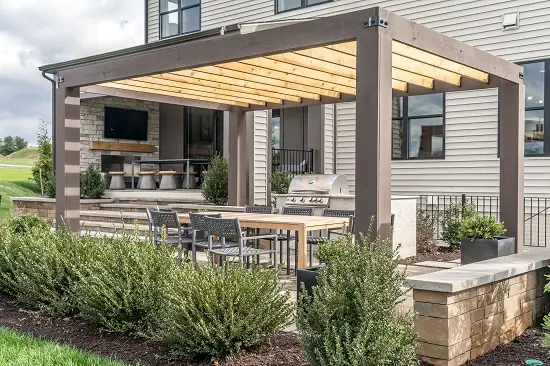
Advantages and Disadvantages Of A Pergola
Pergolas have been an architectural feature of homes for over three thousand years. The name derives from the Latin “pergula,” meaning “projecting eaves” Simple or ornate, a pergola adds beauty and value to any entertainment area.
Advantages Of A Pergola
- They are easy for the home handyman to design and erect and less expensive than a gazebo or cabana as they require less material and less time to erect.
- They add value to the home far above their cost, making any outdoor area more attractive and more usable as they provide protection from the summer sun.
- Although they are open structures, pergolas can be effectively screened by the use of drapes, retractable awnings, drop-down blinds, or even a flat roof.
Disadvantages Of A Pergola
- A standard pergola offers limited protection from the sun or wind unless additional screens are added or creepers have grown over the lattice roof.
- Generally constructed from wood, they require regular maintenance to prevent weather-related damage. This may be difficult if the woodwork is covered by creepers or vines.
- Because pergolas rely on plant cover to provide shade, it will be a season or two before they become effective.
Advantages And Disadvantages Of A Cabana
While the word “cabana” conjures up tropical beaches or Caribbean islands, it more commonly applies to a poolside shelter, which may be elaborate but could also be a simple “hut.”
Advantages Of A Cabana
- It provides shaded cover between swims, a place to change into and out of swimming gear, or a parent to relax while keeping an eye on the kids in the pool.
- Permanent cabanas can provide an architectural focal point in the garden, much like it’s close relative to the gazebo, and add substantially to the value of a home.
- If you have a poolside cabana close to the house, it might not be necessary, but if you own a beachside property and the cabana is far from the house, you can install all the comforts of the home, including a bar, kitchenette, plumbing and electricity to make the cabana totally self-sufficient.
Disadvantages Of A Cabana
- A poolside or beachside cabana, at its best, is an expensive structure – traditional cabanas have a pitched, thatched roof, and that is a specialized undertaking. It’s not essential, but it defines a true cabana.
- Being a waterside structure implies that it will only be fully utilized when it’s swimming weather. So, winter is not cabana time, and you’ll need to ensure that it’s not overrun by other creatures looking for shelter.
- As with gazebos and pergolas, the cabana is traditionally built of timber and requires ongoing maintenance and repair. As a costly accessory and one which increases the value of your property, maintenance is not an option but a necessity.
Deciding On A Gazebo Vs. Pergola Vs. Cabana
Which of the three garden structures best suits your home depends on several factors, some to do with the aesthetics, others to do with financial considerations.
Your Budget Is The Deciding Factor
If you have a limited budget, it would be better to build the best possible pergola than a mediocre, mundane gazebo. Remember that both have a similar use to provide additional outdoor living space.
Both, too, will increase the value of your property should you ever decide to sell. So, both are worthwhile investments – but a top-quality pergola will outlast a cheaper version of a gazebo and be more valuable in the long run.
While natural wood such as cedar is the traditional material for all three structures and is still popular, there are other options that should be considered when budgeting.
- Pressure-treated wood is the least expensive choice and has a reasonably long lifespan if painted or sealed.
- Wood composite has improved in recent years and is a very durable, reasonably priced alternative to natural wood.
- Vinyl or PVC has become the material of choice for many as it is almost maintenance-free,
comes in a wide color range and is easy to work with.
- Fiberglass is an expensive option, but it is exceptionally hardy, requires very little maintenance, and can be painted any color you choose.
- Aluminum is recommended particularly for pergolas as it is lightweight and solves the problem of maintenance when creepers make it difficult.
The Size Of Your Back Yard Limits Your Choice
A gazebo in a garden is an architectural statement, but it needs a spacious setting to really impress. If it is too close to the house in a small garden, it will look out of place, and a pergola will be more in keeping with the setting.
A cabana, in terms of our definition, needs a poolside setting. Still, the same limitation applies – if the garden is too small to be able to fit a cabana, don’t make the mistake of squeezing one in. If your pool is directly in front of your patio, a beautiful pergola will be as effective as a cabana in providing entertainment space and will look a whole lot better.
A Big Garden Needs Big Ideas
It’s crucial, as we’ve mentioned, not to overdo your garden structure. It’s equally important to take advantage of an expansive garden, so in this instance, a small pavilion (or roofed pergola) would not do justice to the space. A traditional gazebo with its peaked roof, hexagonal or octagonal shape, and raised floor would be the best choice.
Make The Right Investment Decision
The last factor to consider is more to do with the investment value than the aesthetics of the garden structure you build. By that, we mean that if you’re living in an area of relatively modest homes with low average market values, it would not be wise to spend tens of thousands on an elaborate gazebo or cabana.
You’ll be overcapitalizing your property and will be unlikely to recover the expense should you decide to sell. Instead, go for a less expensive pergola that achieves the intended purpose of providing outdoor living space without costing a fortune.
Conclusion
There is some confusion regarding gazebos, pergolas, and cabanas. In fact, there is a somewhat blurred line separating them – pergolas are said to be a type of gazebo, a gazebo can be open-sided like a pergola, and a pergola with a roof can be called a pavilion!
We hope we’ve cleared up the confusion and trust we have succeeded. One thing is clear – a well-designed, correctly-proportioned, quality-constructed structure in your garden will raise your outdoor living experience to a whole new level without having to leave home!
We also have other Versus articles on the site if you have any more questions about the differences between outdoor spaces.

